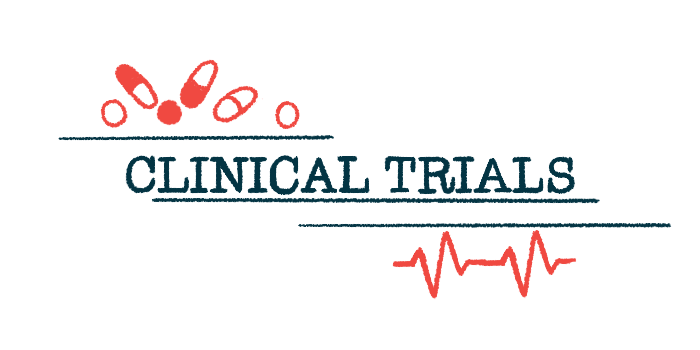New drug HU6 cuts liver fat but preserves muscle mass
Trial tested 3 doses vs. a placebo in 200-plus adults with MASH

HU6, an experimental oral therapy from Rivus Pharmaceuticals, safely and effectively reduced liver fat and led to fat-selective weight loss in adults with metabolic dysfunction-associated steatohepatitis (MASH), a severe form of fatty liver disease.
Importantly, it worked while preserving muscle mass in these MASH patients.
That’s according to new data from a Phase 2 clinical trial, dubbed M-ACCEL (NCT05979779), that were presented at the American Association for the Study of Liver Diseases’ The Liver Meeting 2025, being held Nov. 7-11 in Washington, D.C.
“The favorable efficacy, safety, and tolerability profile of this oral investigational therapy supports HU6’s potential long-term use in treating individuals living with this chronic disease,” Mazen Noureddin, MD, a professor of medicine at Houston Methodist Hospital and cochairman of the board of the Summit and Pinnacle Clinical Research Networks, said in a press release from Rivus.
Rivus is now planning to launch AMPLIFY, a new Phase 2 trial testing HU6 in people with MASH to confirm the optimal dosing for future, late-stage trials.
David Grainger, PhD, chairman of development at Rivus, said the company hopes to move quickly to advance the therapy’s development.
“Given the competitive efficacy and safety profile of HU6 as a novel MASH therapeutic, we are eager to initiate our next trial to address the growing need for new treatment options,” Grainger said.
Metabolic dysfunction-associated steatotic liver disease, or MASLD, is marked by the abnormal buildup of liver fat in people who typically have underlying metabolic conditions like obesity or diabetes.
In some people, MASLD can progress to MASH, where the buildup of fat leads to liver inflammation and scarring (fibrosis), which can set the stage for serious liver damage.
HU6 part of a new class of medications called CMAs
HU6 belongs to Rivus’ new class of oral medications called controlled metabolic accelerators (CMAs), which are designed to increase a person’s resting metabolism so the individual burns more fat for energy. This is expected to help promote “sustained, fat-selective, muscle-preserving weight loss,” the release stated.
“There is a real need for novel therapies with new mechanisms for treating MASH as well as other chronic diseases associated with obesity,” Grainger said.
The U.S.-based Phase 2 M-ACCEL trial tested three doses of HU6 — 150, 300, and 450 mg — taken once daily, against a placebo in more than 200 adults with MASH, most of whom had diabetes.
The primary goal was to assess the effect of treatment on liver fat content, as measured with a special MRI scan. Prior to entering the trial, all participants had a liver fat content of at least 8%. Typically, for context, a healthy liver has a fat content of less than 5%.
The study hit its main goal: After six months of HU6 treatment, the average reduction in liver fat ranged from 27% to 31.2% for each of the three HU6 doses. Meanwhile, participants given the placebo showed a significantly lower reduction of 6.7%. Rivus noted that findings were similar in patients with or without diabetes.
Data also showed that at least half of the HU6-treated participants experienced a reduction in liver fat content of at least 30%. In contrast, fewer than a quarter of those on the placebo experienced such a reduction.
According to Noureddin, this level of reduction in liver fat “has been shown to be a clinically meaningful result associated with MASH resolution and fibrosis improvement [or lessening].”
The data also indicated that the two higher HU6 doses resulted in significantly greater weight loss, which was specifically driven by a reduction in fat levels, with muscle content remaining steady over time.
Therapy able to remove fat stored around organs in abdomen
HU6 was particularly effective at removing visceral fat — the fat that’s stored around organs deep in the abdomen — which is less visible than fat under the skin but is closely associated with a higher risk of cardiometabolic conditions.
“In addition to the robust liver-centric effects, HU6 treatment resulted in fat-selective weight loss with preservation of skeletal muscle mass, which may address the metabolic dysfunction underlying MASH,” Noureddin said.
Safety data showed HU6 was overall tolerated well; no serious side effects were reported.
HU6 treatment resulted in fat-selective weight loss with preservation of skeletal muscle mass, which may address the metabolic dysfunction underlying MASH.
The findings from M-ACCEL were, overall, consistent with data from a previous Phase 2 trial (NCT04874233) that tested HU6 in overweight or obese people who had MASLD. The results of that trial likewise indicated that the therapy safely reduced liver fat content.
Another Phase 2 study (NCT05284617) that tested the therapy in people with obesity-related heart disease also indicated that HU6 can safely promote weight loss.
“Across three Phase 2 trials, all of which met their primary [goals], HU6 has consistently demonstrated a unique tolerability profile with the potential to address the need for a long-term treatment for what are typically chronic diseases,” Grainger said.








